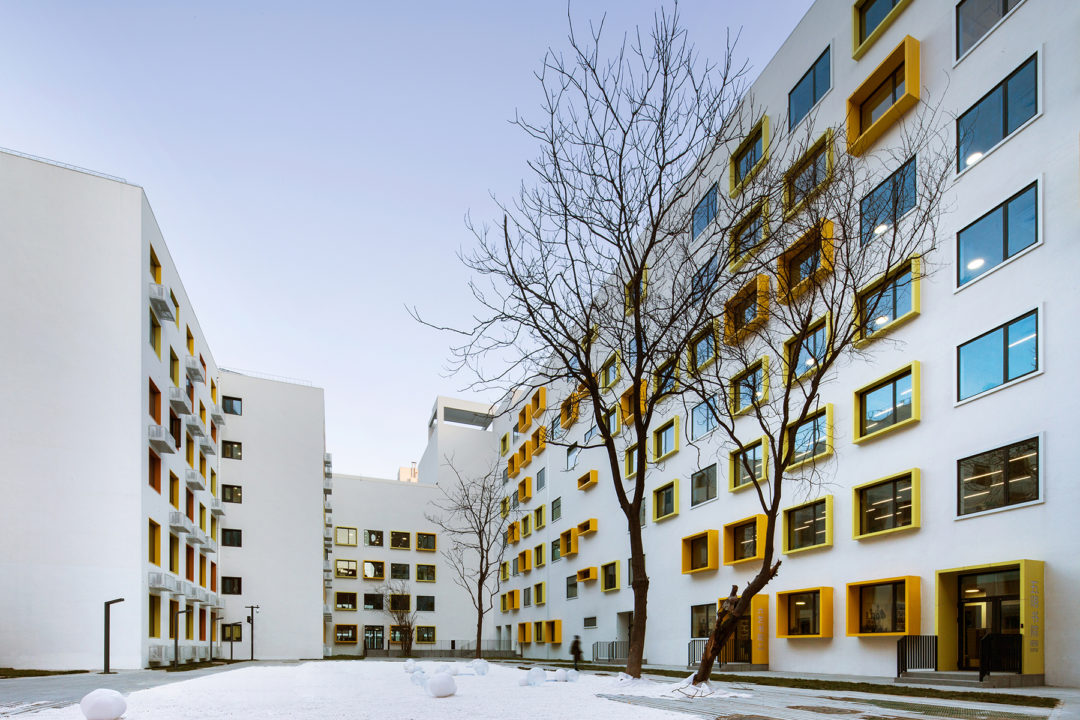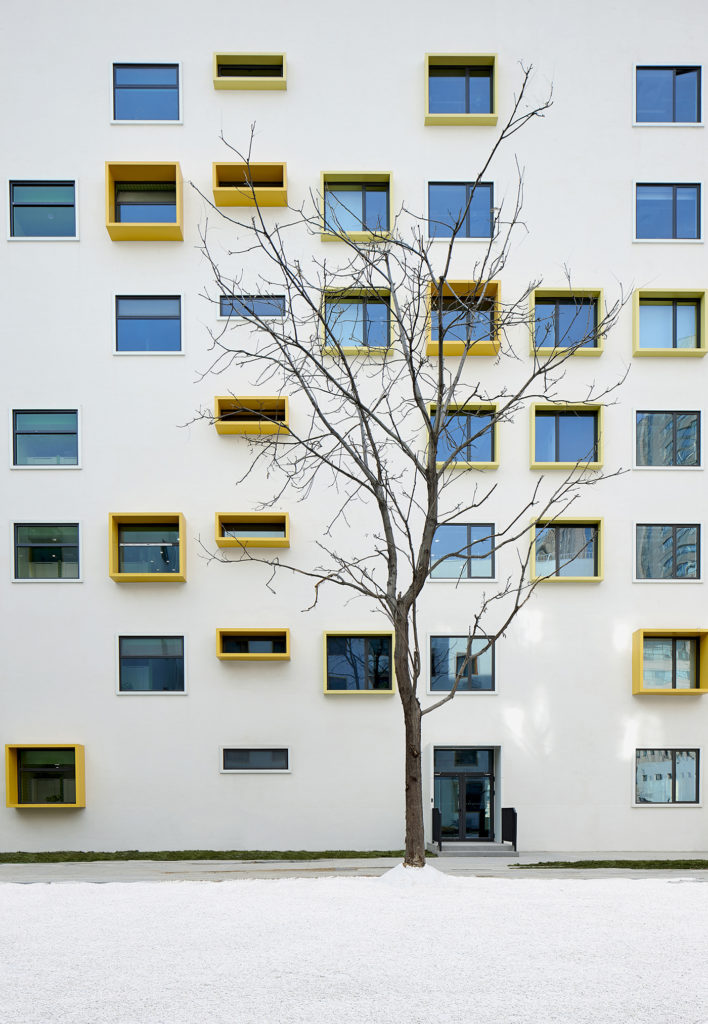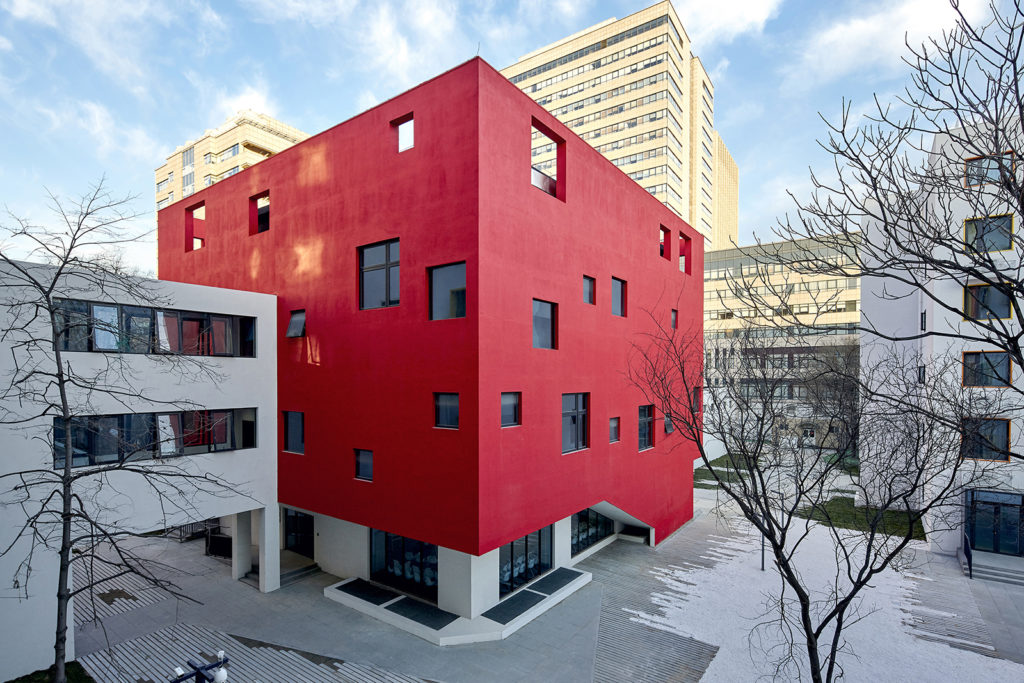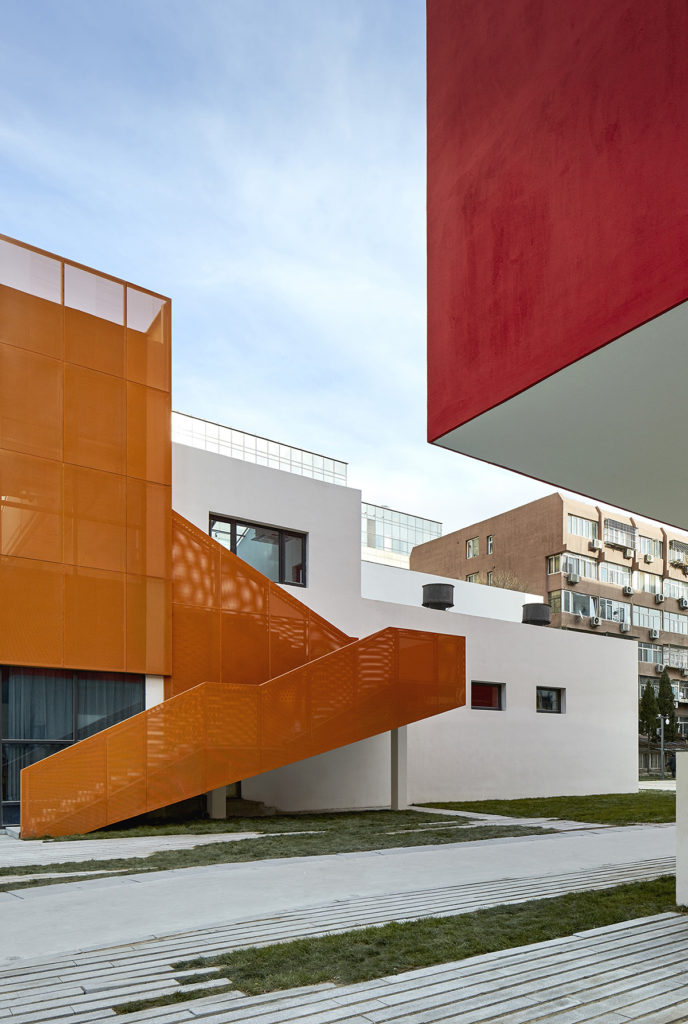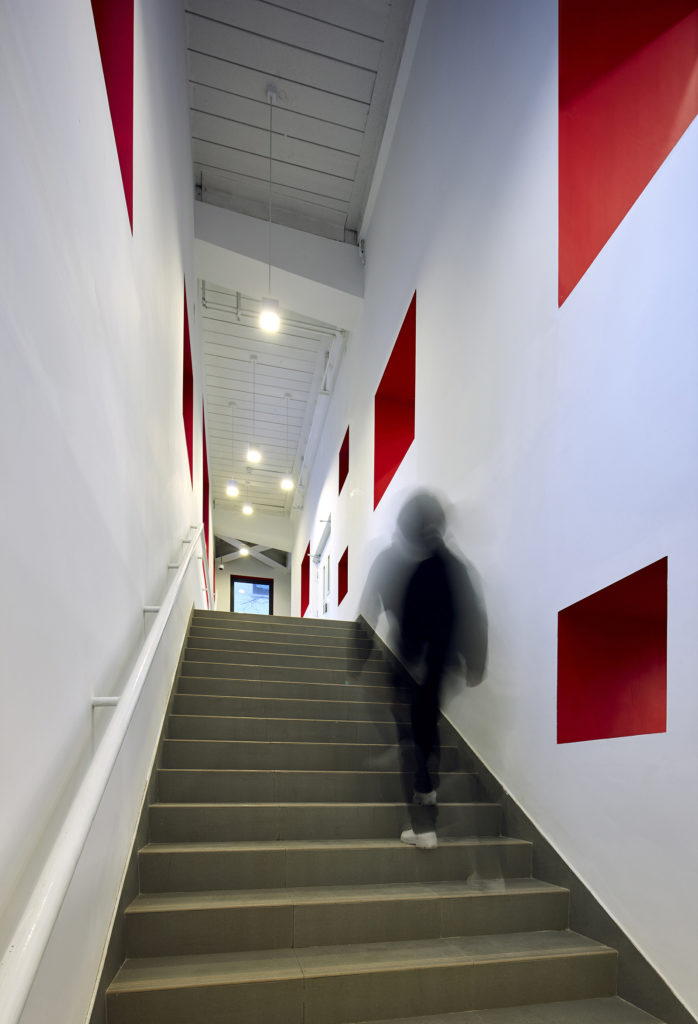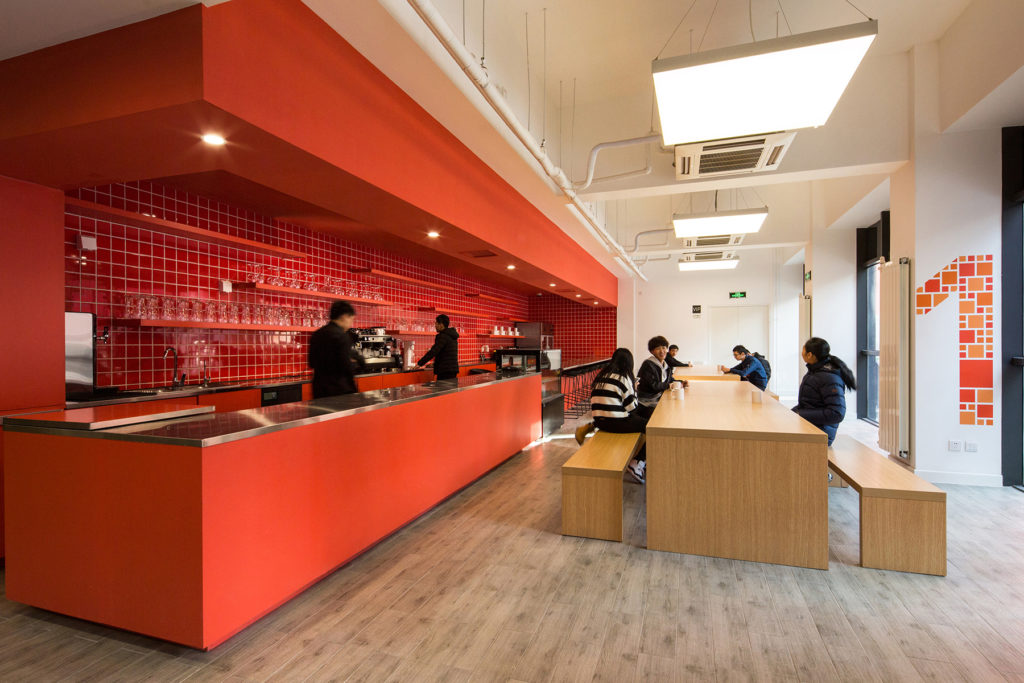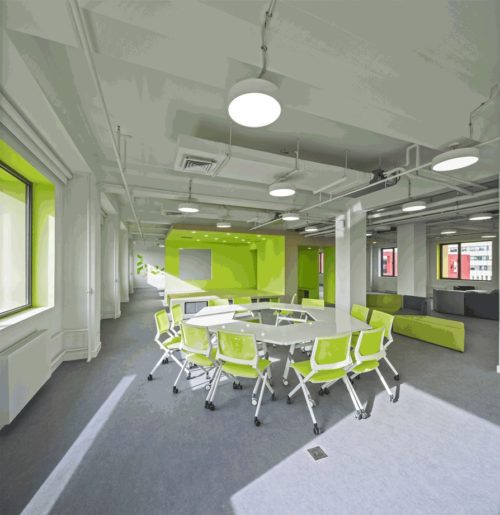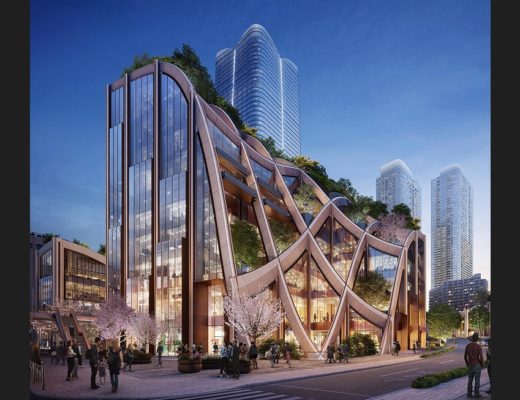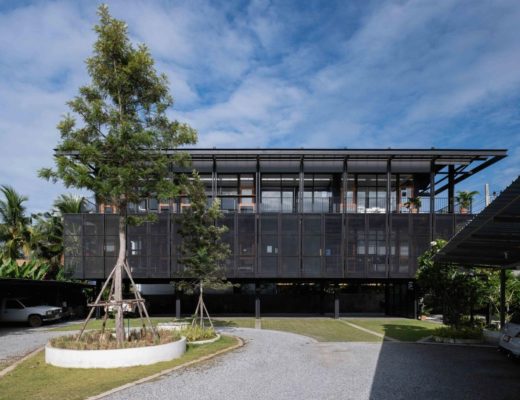Beijing-based Chaoyang Future School is the latest iteration of Peking University’s pedagogic model for China’s future creators, in their continued exploration with Crossboundaries architecture firm to manifest places and spaces that embody their collective vision.
The large 26,000m² renovation of an existing educational campus built in the 1980s completely reassesses the landscape, facade and interior. It uses colour to negotiate from the urban scale to the human, and multi-functionality to assist both guided and passive learning.
Densely arranged, the existing campus mirrors its tight urban surroundings. In the earlier plan, the corridors inside its six buildings were lined with rooms lacking identity or coherence. However, like the Affiliated High School before it – the first collaboration of Crossboundaries and Peking University– Future School needed to explore the demands of the school to serve the realm of a community. Learning doesn’t just happen in the classroom but throughout the campus, exponentially raising the value of this tight urban area. Formulating a crossover of the in and out and the public and private, the school creates a village that delivers to individual needs, catering to both students and teachers where they will eat, sleep, play, study, learn, and explore.
Born of Confucian thinking, the Chinese value system is centered on collectivism. Since China’s economic opening in the 1970s the nation’s development has been nothing short of a race. Transforming its historically powerful workforce to engage with a global economy, the urgent call is for educational reform to deliver future generations to the stage as global actors. In this context, Crossboundaries responds to this by exploring the translation of China’s strong cultural history into a modern paradigm that develops independent thinkers and autonomous citizens – creating spaces that encourage and support their necessary interactions.
For the headmaster, the challenge of rethinking the nature of Chinese education is to resist the historical precedent to reduce to tabula rasa a rich collective knowledge in the name of progress and instead leveraging its own history to develop new methods. Crossboundaries’ objective is to reuse and reimagine, adding to the ongoing lifespan of the existing buildings – to not only prolong their use but also restore their relevance and purpose.
Crossboundaries implemented two key approaches in Chaoyang Future School: ‘the conventional’, the general upgrade of the out of date and degraded facility to a modern campus, and ‘the unconventional’ which materialized as multifunctional interventions. All of which attributes flexibility, interconnectedness and identity, the essence of the schools’ spirit.
Colour flows throughout the landscape, facade and interior. Inspired by the rich deciduous and evergreen vines that drenched the campus in its previous state, the colour sustains the liveliness of its outdoor spaces and brings it deep into the activity indoors.
The clean white buildings are punctured with square openings, the rhythm preserved from the original building. Window frames washed in green outline the public face of the campus, subtly fading yellow before warming to a deep red by the time they reach the campus center. The openings ebb and flow in size, swelling to mirror the spatial links behind and broadcast an abstraction of their activities to the community around it.
The interior of each building is given freedom to breathe. Previously confined spaces are opened up with new connections that allow for activities and subjects to crossover. Architectural interventions open floors and walls to expand volumes and give way to new opportunities for creativity and inspiration.
Subject-specific ‘islands’ develop several functioning zones out of a singular open space on each floor. Vertical ‘bridges’ connect two floors with multifunctional activity spaces between related subjects on adjacent floors. Each intervention works to dissolve the spatial boundaries of the buildings’ rigid structure and uniformity, producing collaborative learning spaces bolstered by user-defined furniture.

